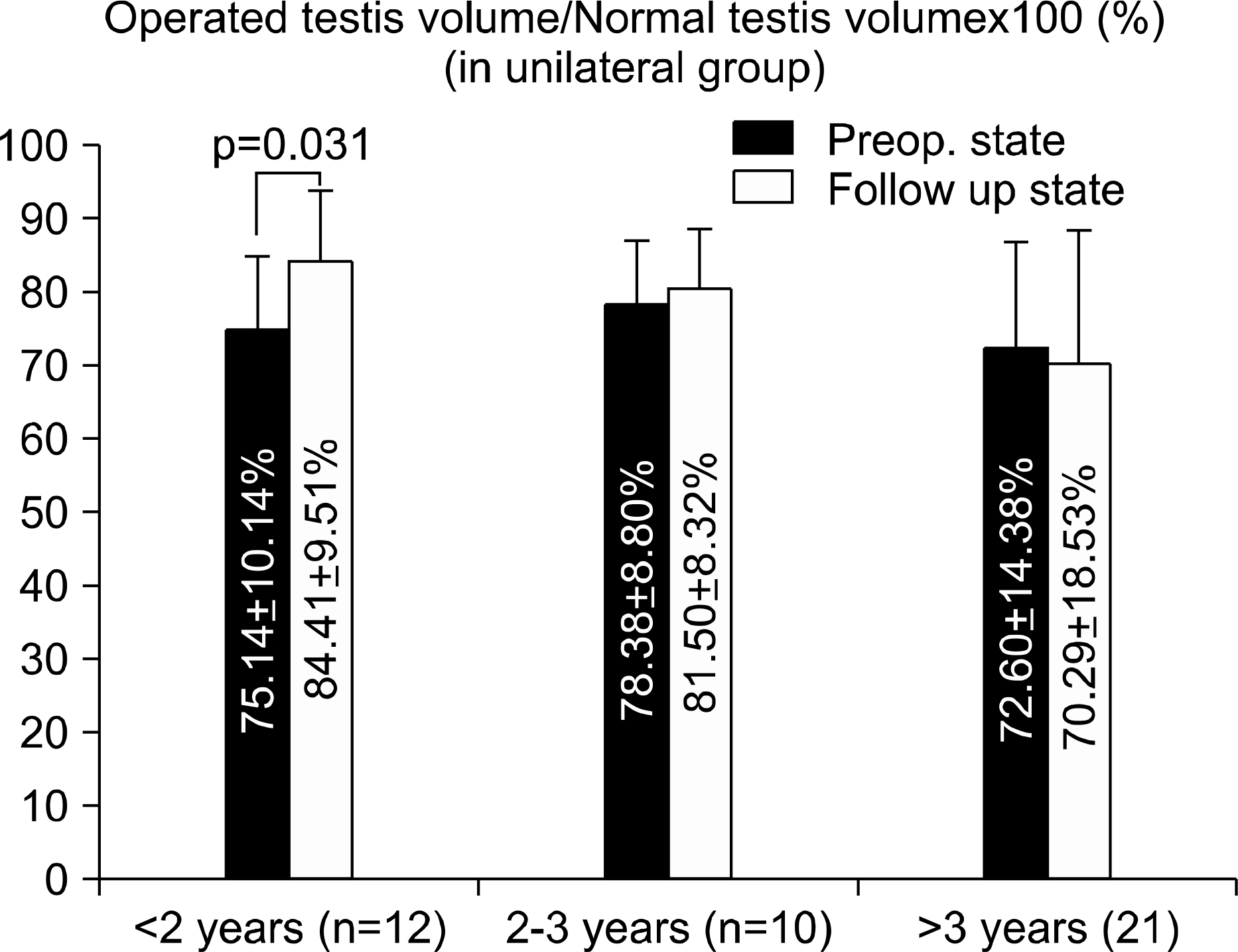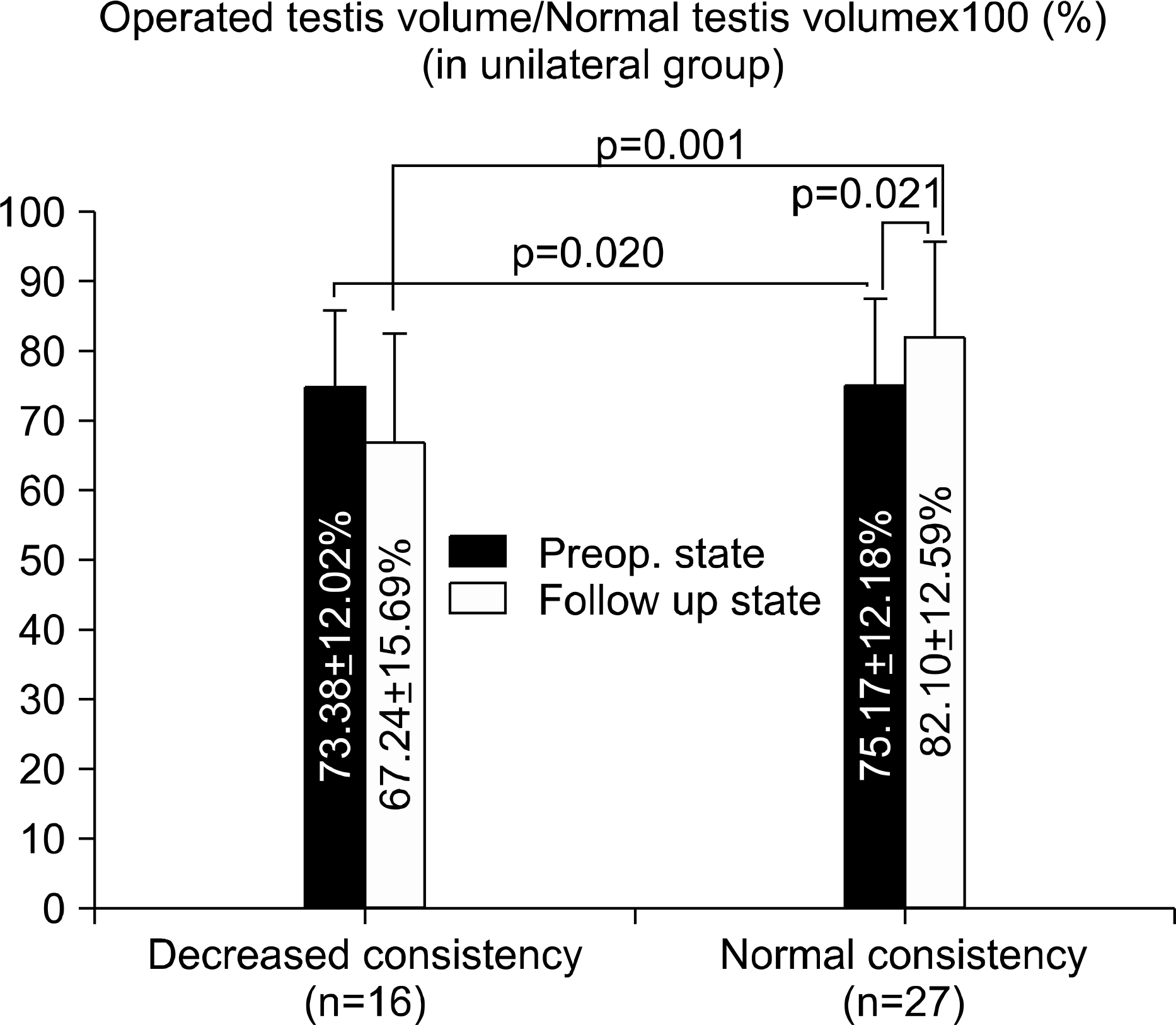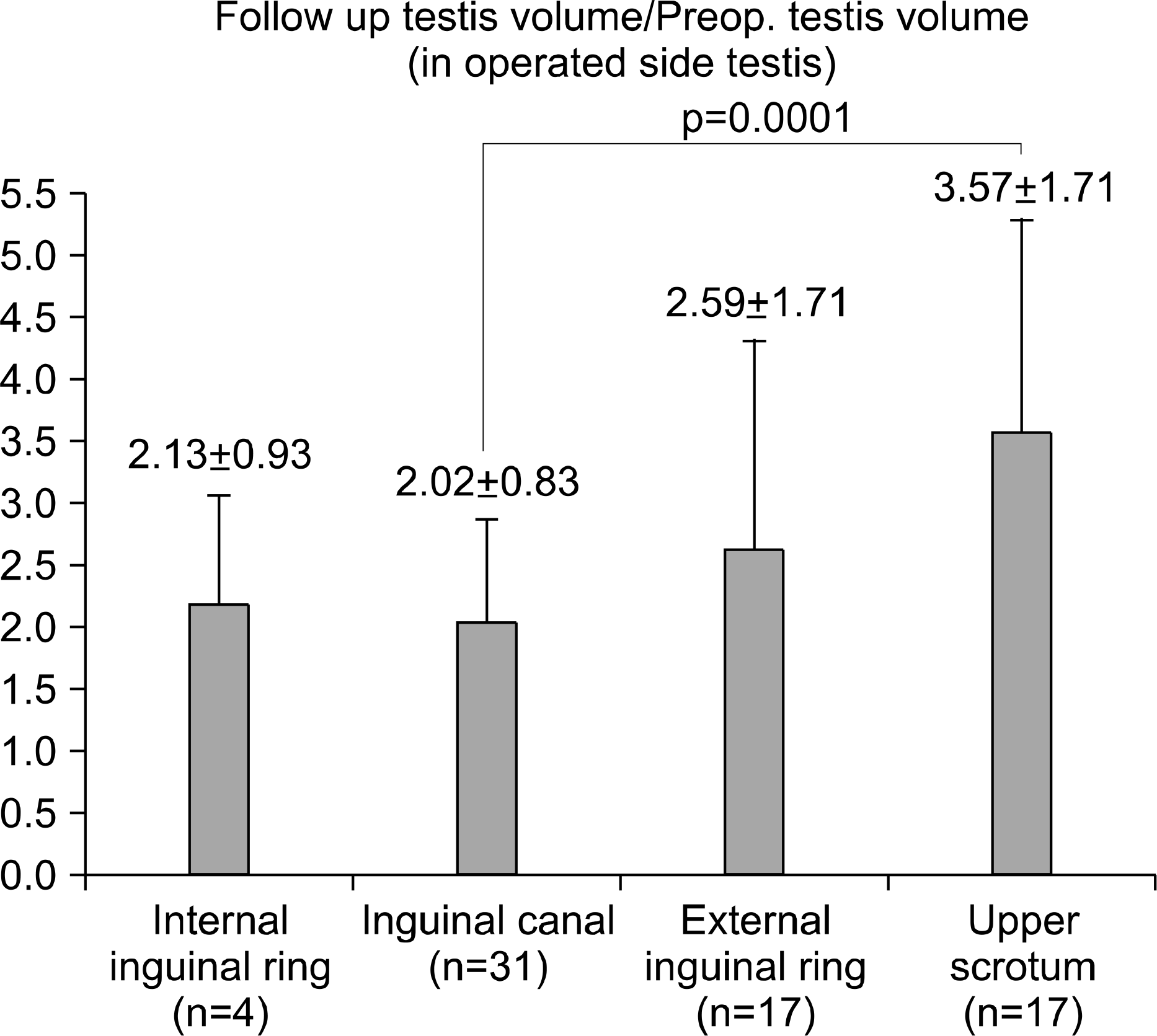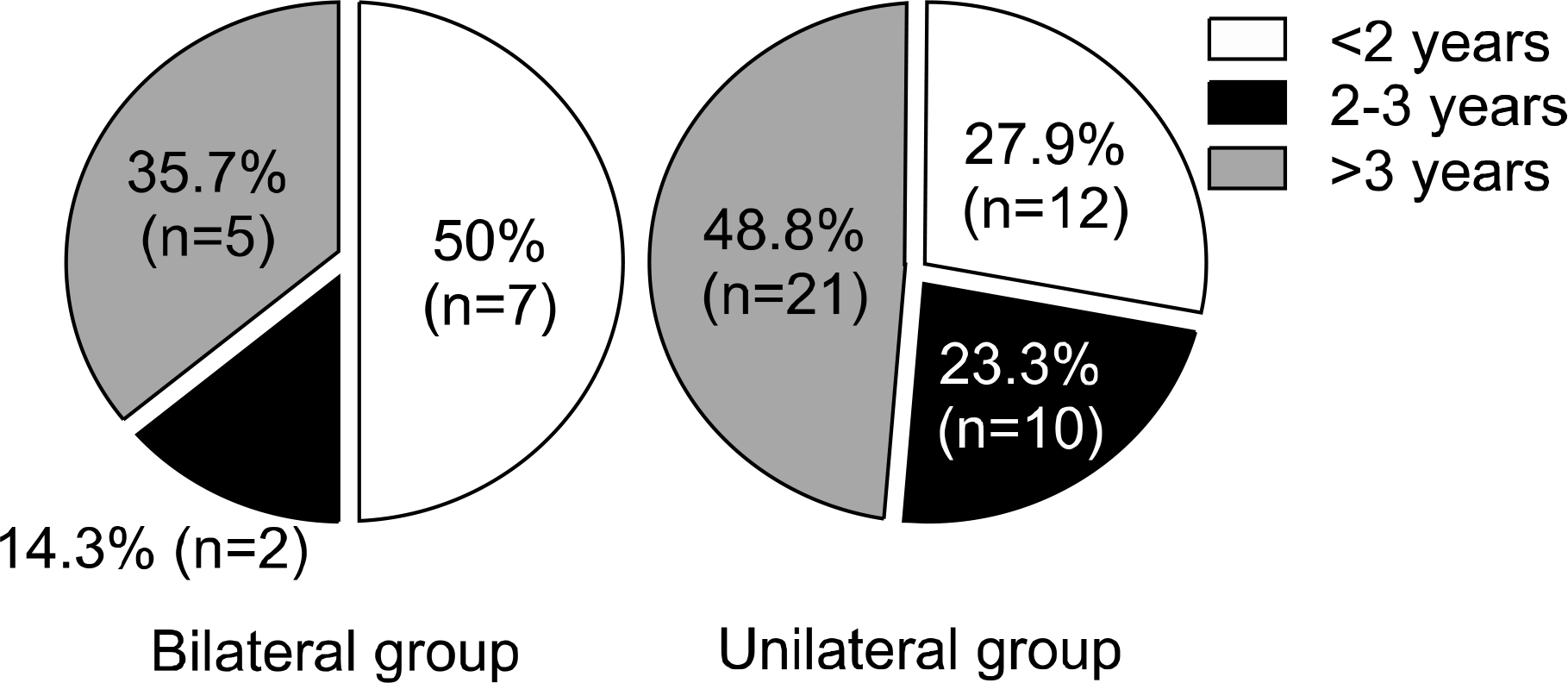Abstract
Purpose
Postoperative longterm followup studies after orchiopexy are rare as compared for other studies such as for histological changes and proper operative age. We analyzed the five-year longterm followup results after orchiopexy, expecting a proper prognosis of testicular growth.
Materials and Methods
A total of 57 patients were selected from a followup study in 211 boys who underwent orchiopexy between January 1999 and July 2001. Patients were divided in several categories (operation age, testis consistency, pre-operational position of the testis) and were analyzed by examination of the previous medical records, preoperative and postoperative testicular volume (measured by ultrasonography), followup history taking, and from a physical examination.
Results
For the 57 patients, 14 patients had bilateral and 43 patients had unilateral cryptorchidism. All of the cryptorchid testes were smaller than a normal testis in the unilateral group of patients as determined by testis ultrasonography. Sorting by operation age, only patients that received orchiopexy within two years from birth showed a significant recovery of testicular volume percentage (operated testis/normal testis x100%: in the unilateral group) at followup. Sorting by consistency, the patients with normal testicular consistency showed a significant recovery of testicular volume percentage (operated testis/normal testis x100%: in the unilateral group) at followup. Sorting by the preoperative position of the testis, the proximity of the testis to the scrotum was a significant factor for recovery of delayed cryptorchid testicular growth.
Conclusions
Orchiopexy performed at less than two years from birth and the proximity of the testis to the scrotum were significant factors for recovery of delayed cryptorchid testicular growth. Consistency of a cryptorchid testis can be a meaningful factor for expectation of testicular growth by the establishment of an objective measurement for testicular consistency and studies for histological correlation.
Go to : 
REFERENCES
1. Bar-Maor JA, Nissan S, Lernau OZ, Oren M, Levy E. Orchidopexy in cryptorchidism assessed by clinical, histologic and sperm examinations. Surg Gynecol Obstet. 1979; 148:855–9.
2. Lee PA, O'Leary LA, Songer NJ, Bellinger MF, LaPorte RE. Paternity after cryptorchidism: lack of correlation with age at orchidopexy. Br J Urol. 1995; 75:704–7.

3. Kollin C, Karpe B, Hesser U, Granholm T, Ritzen EM. Surgical treatment of unilaterally undescended testes: testicular growth after randomization to orchiopexy at age 9 months or 3 years. J Urol. 2007; 178:1589–93.

4. Park JS, Kim KS. Cryptorchidism: observation following surgical correction. Korean J Urol. 1988; 29:406–12.
5. Kim JS, Park HC. Testicular growth and operative results after orchiopexy in unilateral cryptorchidism. Korean J Urol. 1996; 37:414–25.
6. Kim KD, Chung YW. Clinical observation on undescended testis: a comparison study of palpable and impalpable undescended testis. Korean J Urol. 1985; 26:33–8.
7. Fallon B, Kennedy TJ. Longterm followup of fertility in cryptorchid patients. Urology. 1985; 25:502–4.
8. Lee JH, Han JJ, Song SY, Park KH. Histological changes of the cryptorchid testis according to the age. Korean J Urol. 2002; 43:631–7.
9. Murphy F, Paran TS, Puri P. Orchidopexy and its impact on fertility. Pediatr Surg Int. 2007; 23:625–32.

10. Thorup J, Haugen S, Kollin C, Lindahl S, Lackgren G, Nordenskjold A, et al. Surgical treatment of undescended testes. Acta Paediatr. 2007; 96:631–7.

11. Pettersson A, Richiardi L, Nordenskjold A, Kaijser M, Akre O. Age at surgery for undescended testis and risk of testicular cancer. N Engl J Med. 2007; 356:1835–41.

12. Schneck FX, Bellinger MF. Abnormalities of the testes and scrotum and their surgical management. Kavoussi LR, Novick AC, Partin AW, Peters CA, editors. editors.Campbell-Walsh urology. 9th ed.Philadelphia: Saunders;2007. 3775.
13. Cendron M, Keating MA, Huff DS, Koop CE, Snyder HM 3rd, Duckett JW. Cryptorchidism, orchiopexy and infertility: a critical longterm retrospective analysis. J Urol. 1989; 142:559–62.

14. Nistal M, Paniagua R, Diez-Pardo JA. Histological classification of undescended testis. Hum Pathol. 1980; 11:666–74.
15. Nistal M, Riestra ML, Paniagua R. Correlation between testicular biopsies (prepubertal and postpubertal) and spermiogram in cryptorchid man. Hum Pathol. 2000; 31:1022–30.
16. Saha SK. Cordopexy: a new approach to the undescended testis. A review of 2 to 5-year follow up. J Urol. 1983; 129:561–4.
Go to : 
 | Fig. 2.Comparison of the percentage of the operated testicular volume to the normal testis volume in the unilateral group, sorted by operation age. |
 | Fig. 3.Comparison of the percentage of the operated testicular volume to the normal testis volume in the unilateral group, sorted by testicular consistency. |
 | Fig. 4.The testicular volume growth rate of a total of 69 operated testicular units, sorted by testicular position. |
 | Fig. 5.A comparison of the percentage of the operated testicular volume to the normal testis volume in the unilateral group, sorted by testicular position. |
Table 1.
Patient mean age and followup duration




 PDF
PDF ePub
ePub Citation
Citation Print
Print



 XML Download
XML Download